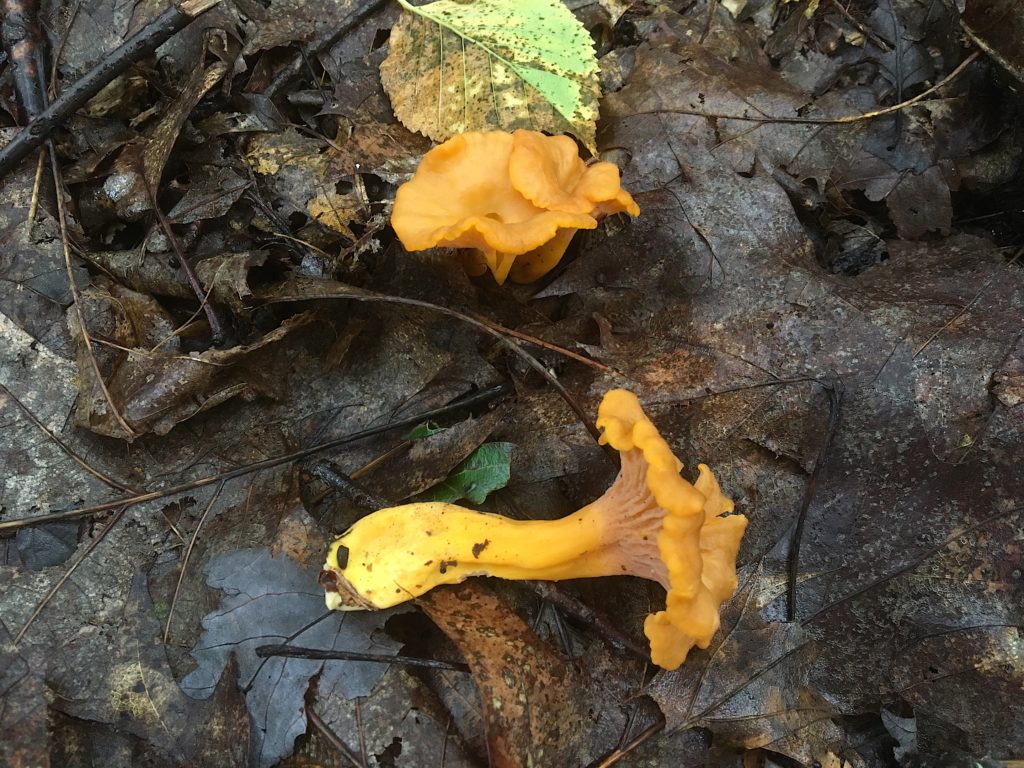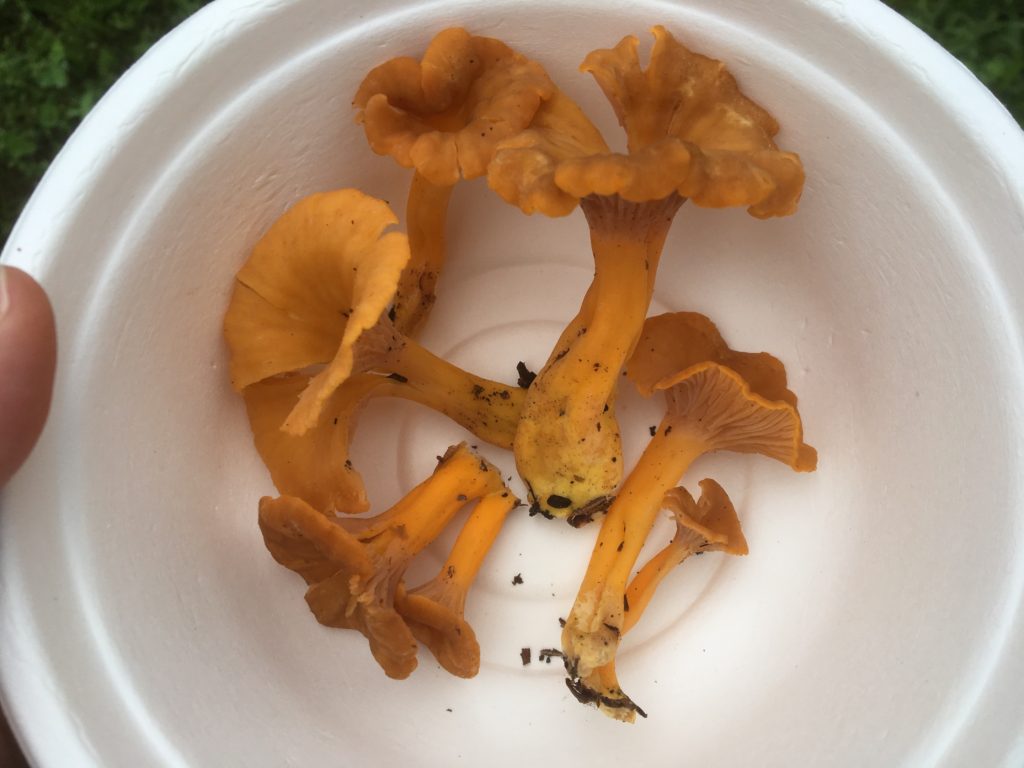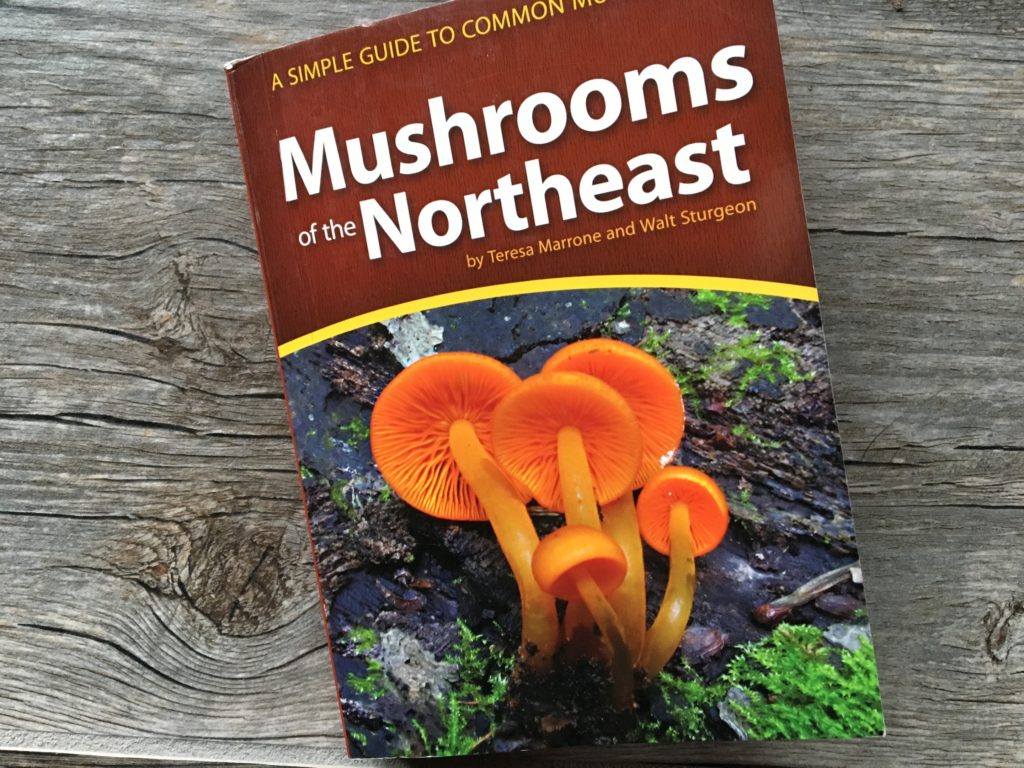Chanterelles are in the same family as the northeastern Black Trumpets (Craterellus), but they have a few toxic look-a-likes, so they’re much trickier to identify than Black Trumpets. When you’re foraging for mushrooms, a positive identification is essential before you even think about eating. For example, there are plenty of bright orange mushrooms in the forest that you should not eat and so if there is any confusion, forget it. The intricacies of mushroom hunting are so varied and convoluted that, for the layman, most mushrooms are not worth the risk of misidentification. Rest assured that mycology – the study of fungi – is a lifetime of learning and that most of what you find in the forest should be left alone.
So – to identify these chanterelles pictured here, as I did with the boletes I found two years ago, I sought the opinions of at least two experienced foragers to help identify them.
Chanterelles are found growing out of the soil under hardwood trees, oak or beech. Chanterelles don’t have gills, they have folds, that can be gently pulled away like a sheet from the outside of the “trumpet” or “cone” of the mushroom like stretched accordion file. They are thicker, meatier and more sturdy than their cousin the Black Trumpet, which is really just a thin, black velvet funnel. Chanterelles and Black Trumpets are often found together under the same oak or beech trees but as mentioned previously, Black Trumpets are so well camouflaged that they are very often missed.
There are many poisonous look-a-likes for the Chanterelle: the Scaly Vase Chanterelle that is found under hemlocks, the Jack O’Lantern that are highly toxic and the False Chanterelle that look eerily similar to the edible types.
There are also four main types of edible Chanterelle: a red, yellow, smooth and yellowfoot Chanterelles. Plus, the fact that there are so many more types of mushrooms with funnel tops and gills that are a similar color to the yellowfoot adds an extra layer of uncertainty that the layman shouldn’t really bother with.
Study the Chanterelle thoroughly, both in the field and with a guide, and compare them to other mushrooms before you think you know anything about them.
Pictured below is our trusty guide by Teresa Marrone and Walt Sturgeon that we’ve been using for about two years:



Jenny, who are your trusted sources? I have so many seeming chanterelles so close but even with a book and photos from websites I’m still uncertain.